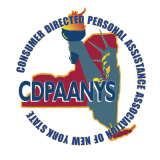Personal protective equipment (PPE) is reserved, for the most part, for health care workers and other individuals working in a healthcare environment. During this unprecedented time, everyone is using PPE to protect themselves from COVID-19. Everyday use of PPE for non-health care workers usually includes a face covering and gloves. PPE use for healthcare workers can include a face covering, eye protection, a gown or protective “suit” and gloves.
Everyday use
- Face covering- Secure the face covering and then adjust the nose area to fit as tight as possible. The nose must be covered for the mask to be as effective as possible. If the face covering is washable, wash it frequently, or when it becomes wet or soiled. If the face covering is disposable, discard when it becomes wet or visibly soiled.
- Gloves- Remember that your gloved hands are contaminated, and care should be taken not to touch unprotected items, including cell phones. Do not wear gloves when you are in the restroom or eating.
The proper order for putting on (donning) and removing (doffing) personal protective equipment (PPE) is crucial because it protects the wearer from infection. If not done correctly, the risk of exposure is significantly higher.
For everyday use (non-healthcare workers)
Donning (putting it on) :
- Face covering- secure and ensure a tight fit
- Gloves- place over both hands
Doffing (taking it off):
- Gloves- remove these first! Remember, the outside of the gloves is contaminated. Grasp the outside of the glove with the opposite gloved hand and remove it. Hold the removed glove in the gloved hand. Slide fingers of the ungloved hand under the remaining glove at the wrist and peel the glove off over the first glove and discard.
- Face covering- Remember that the front of the mask is contaminated; don’t touch it. Grasp the bottom and remove it from the inside. Untie or remove the closures. If you are saving the face covering to reuse, place inside a clean paper bag.
Remember:
- Keep your hands away from your face.
- Limit surfaces touched as much as possible.
- Avoid touching your cell phone and other commonly touched surfaces while you are wearing gloves or perform hand hygiene after touching frequently touched surfaces.
- Continue to observe cough/sneeze etiquette and frequent hand hygiene.
For healthcare workers
Donning (putting it on):
- Perform hand hygiene.
- Gown- put on and secure.
- Mask- make sure the nose area is tightly secured.
- Eye Protection- place over face and adjust to fit.
- Gloves- extend to cover the wrist of the gown.
Remember:
- Keep your hands away from your face.
- Limit surfaces touched as much as possible.
Doffing (taking it off):
- Gloves- Remember that the outside of the gloves is contaminated. Grasp the outside of the glove with the opposite gloved hand and remove it. Hold the removed glove in the gloved hand. Slide fingers of the ungloved hand under the remaining glove at the wrist and peel the glove off over the first glove and discard.
- Eye Protection- Remember that the outside of the goggles is contaminated. Remove from the inside or handle by the earpieces.
- Gown- Remember, the front of the gown and sleeves are contaminated. Unfasten the gown and pull it away from your neck and shoulders. Only touch the inside of the gown. Fold or roll into a bundle and discard.
- Mask- Remember that the front of the mask is contaminated; don’t touch it. Grasp the bottom and remove it from the inside.
- Perform hand hygiene.
True Care is closely monitoring all updates in regard to COVID-19, and we are making the necessary adjustments as events progress. We do not wish for you to report to office locations unnecessarily, especially under the current crisis. If you require supplies, please complete this form, and one of our representatives will contact you.









